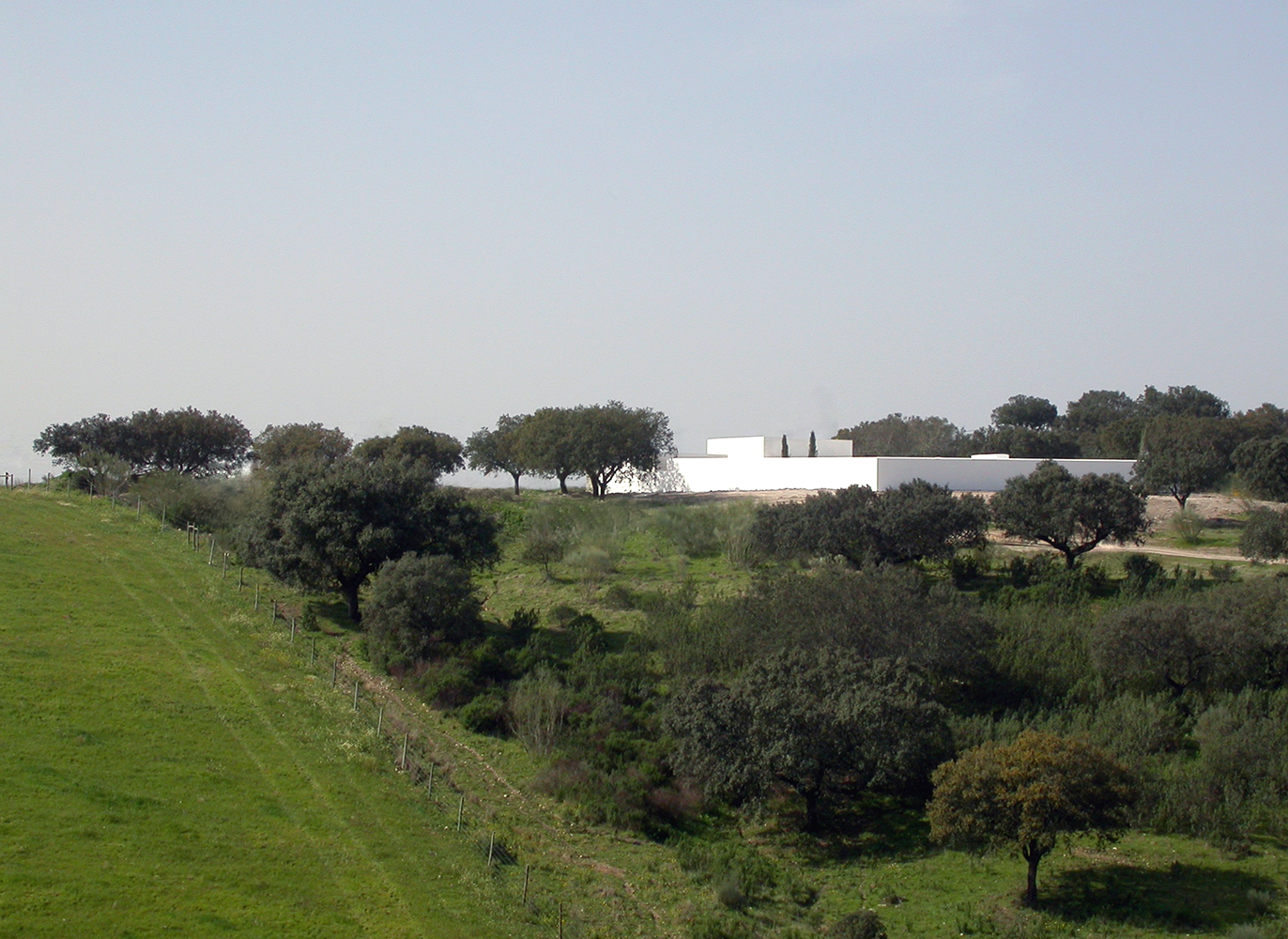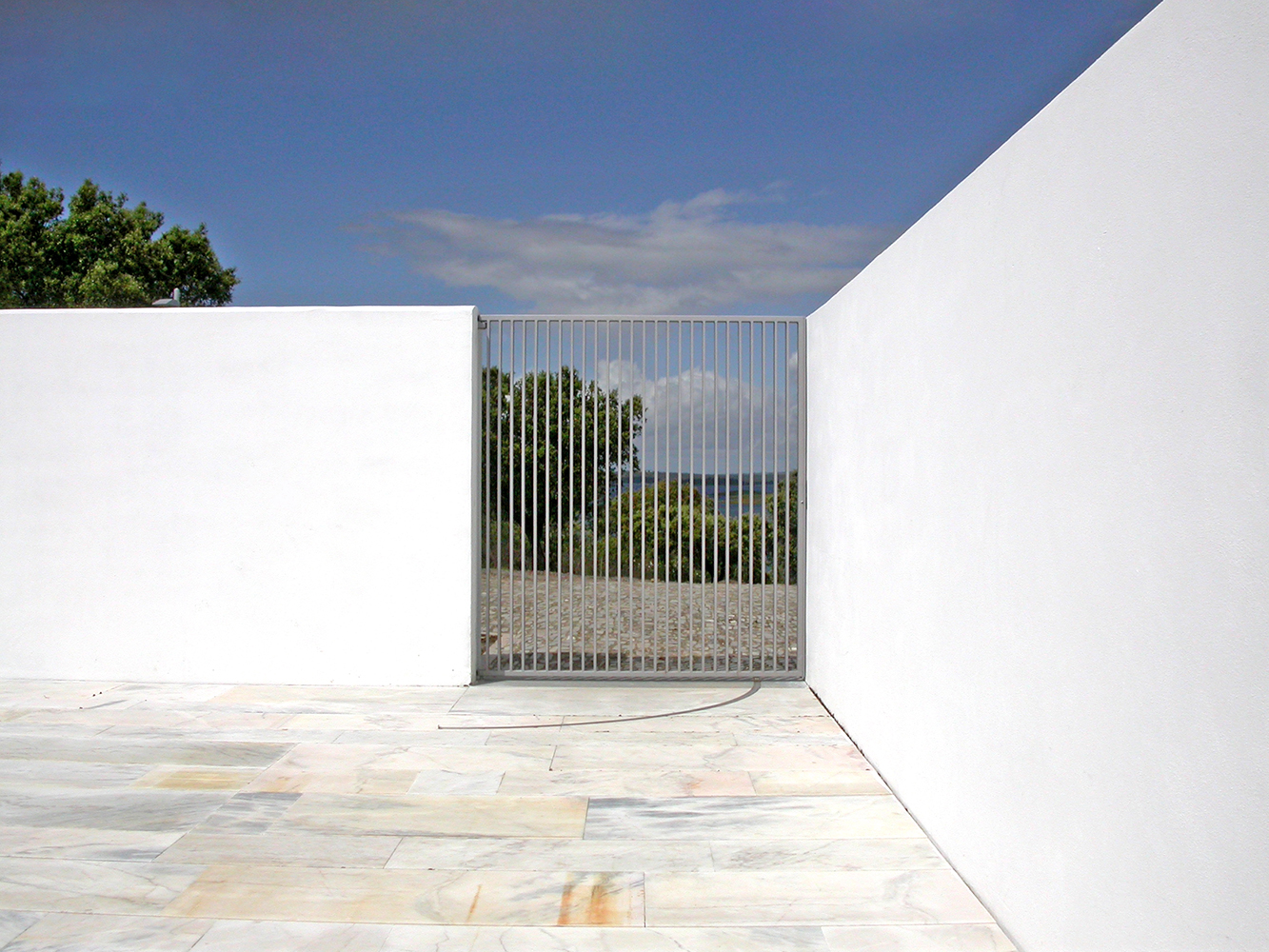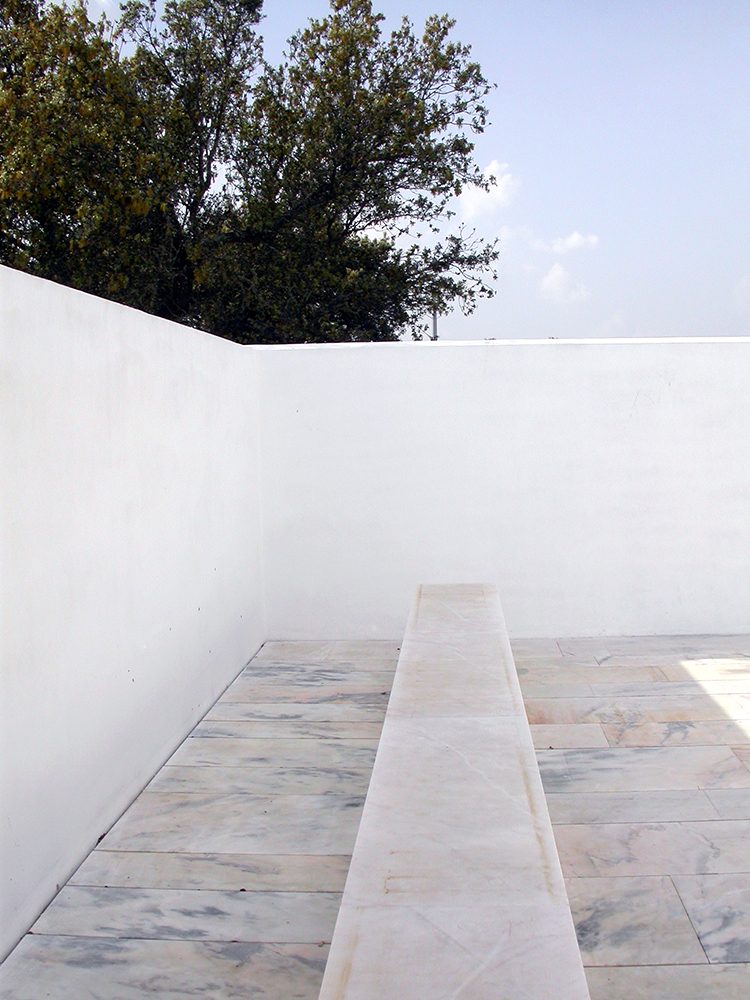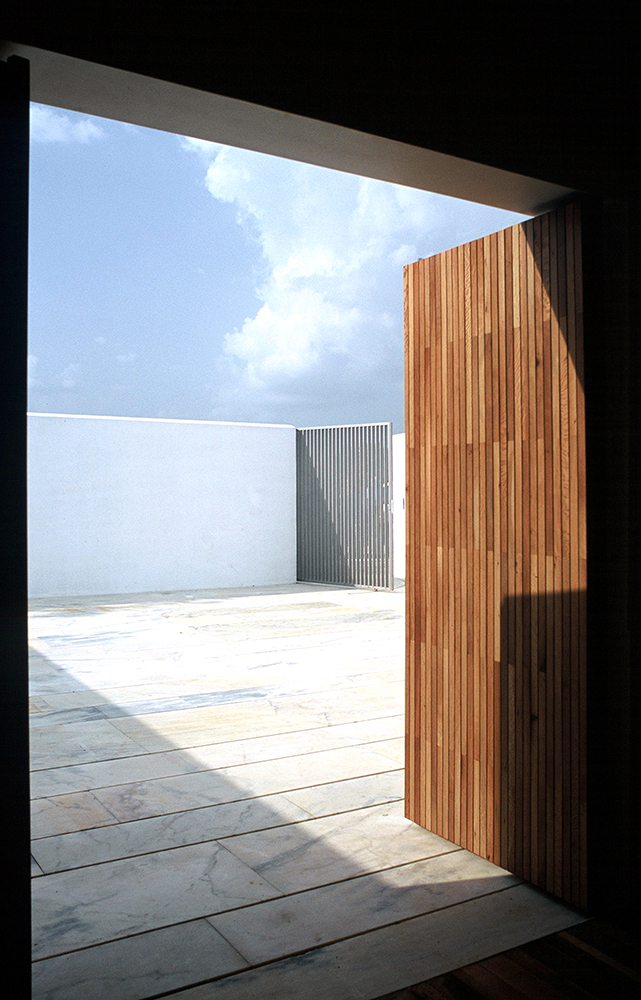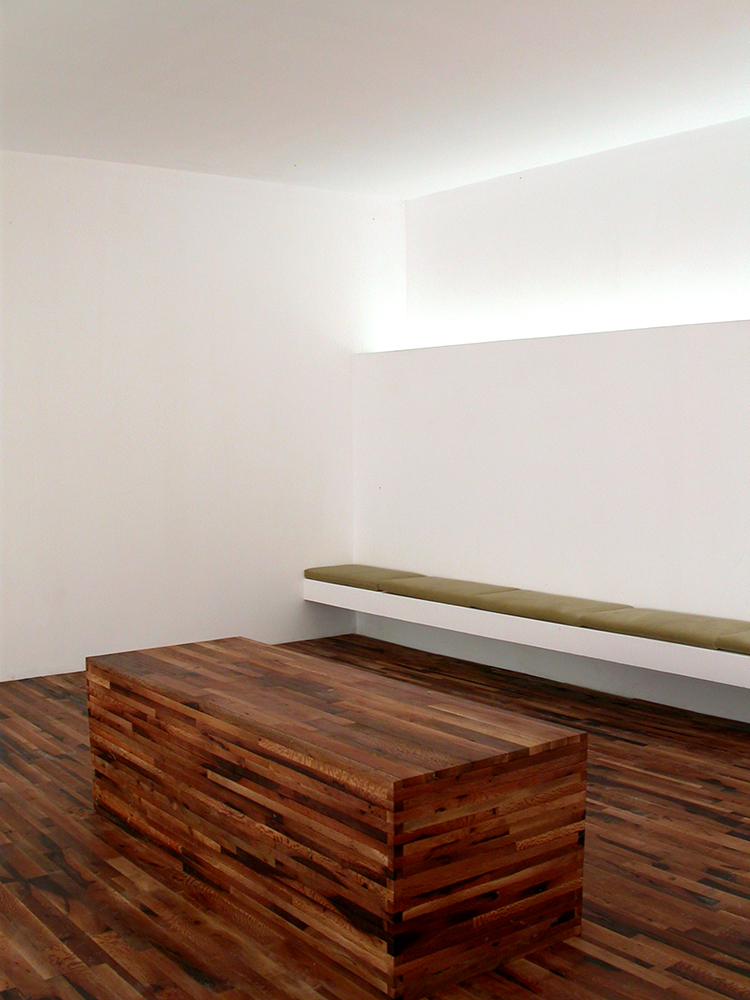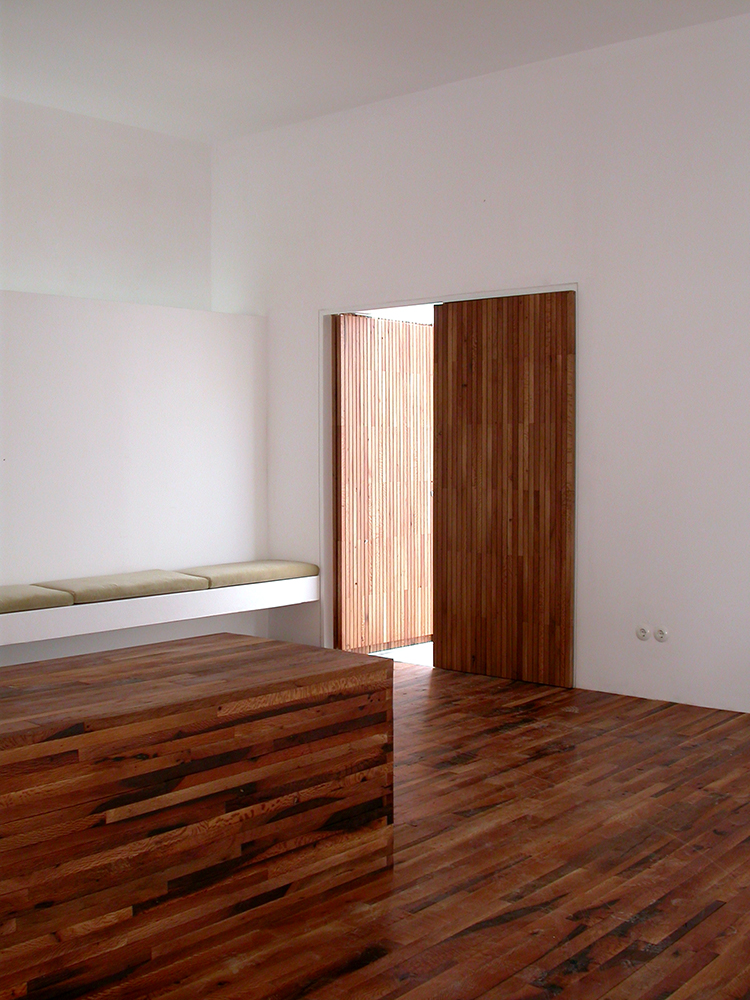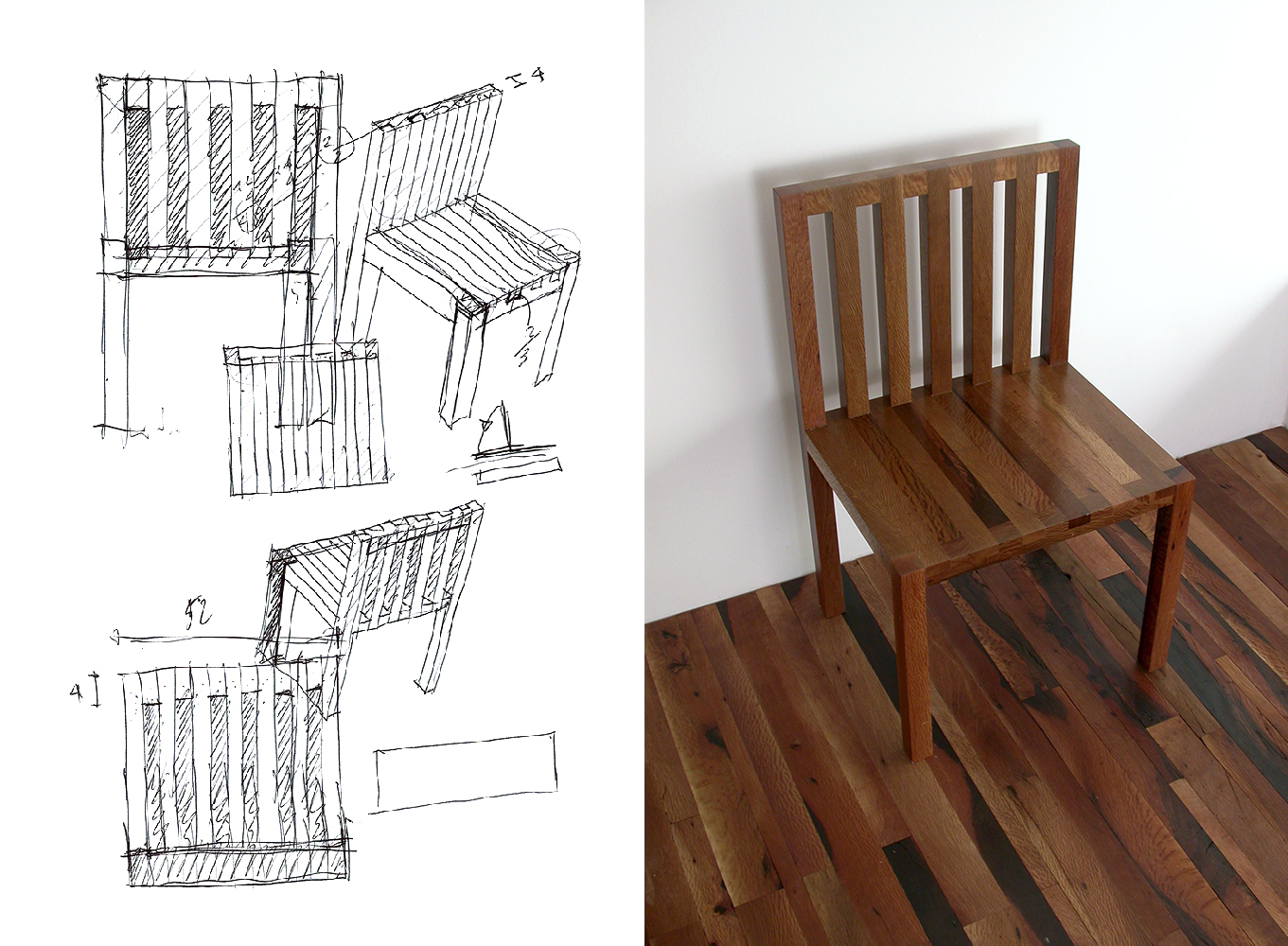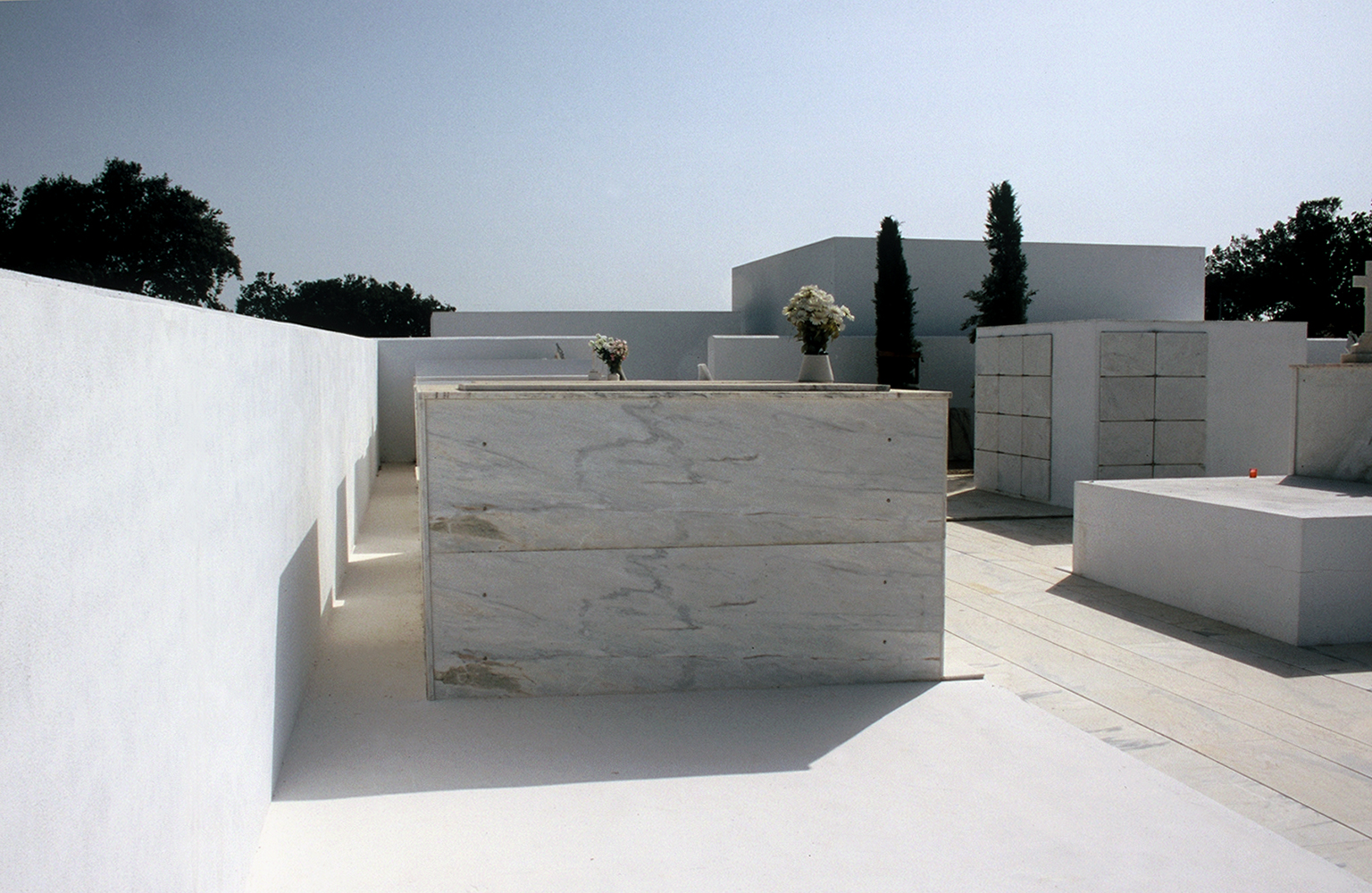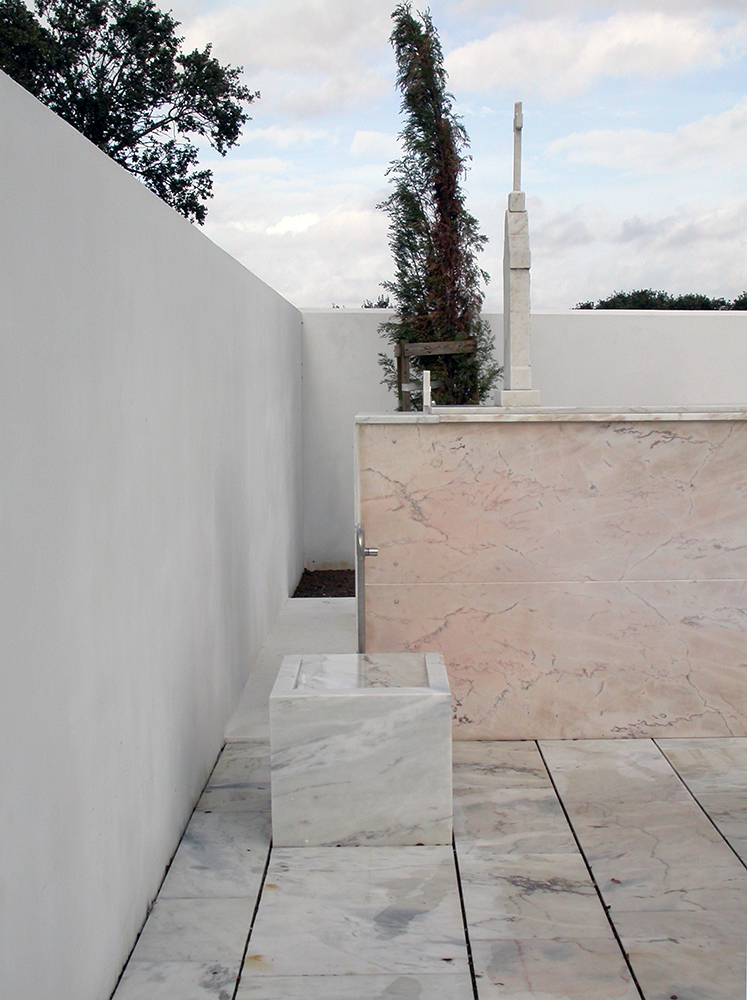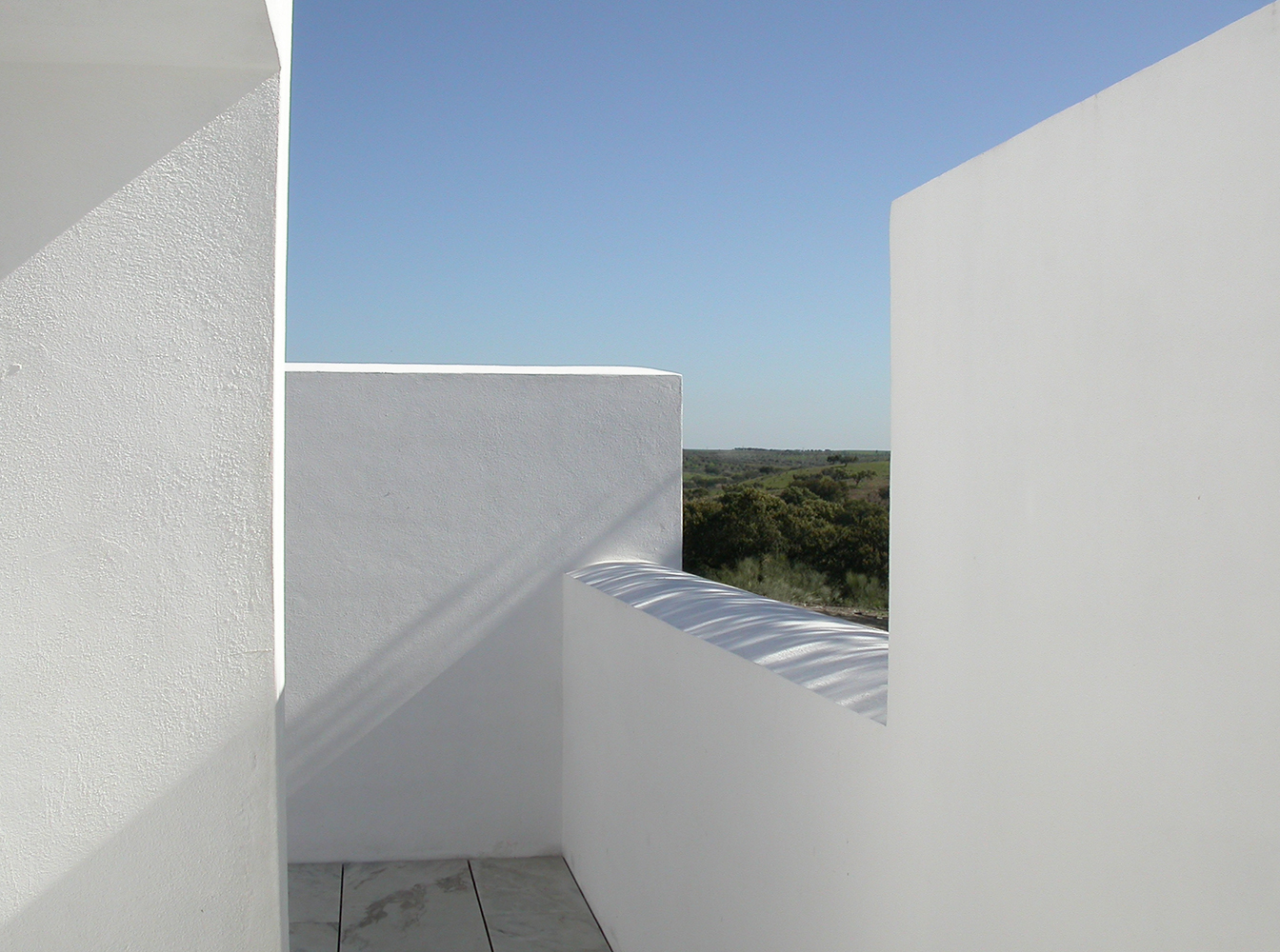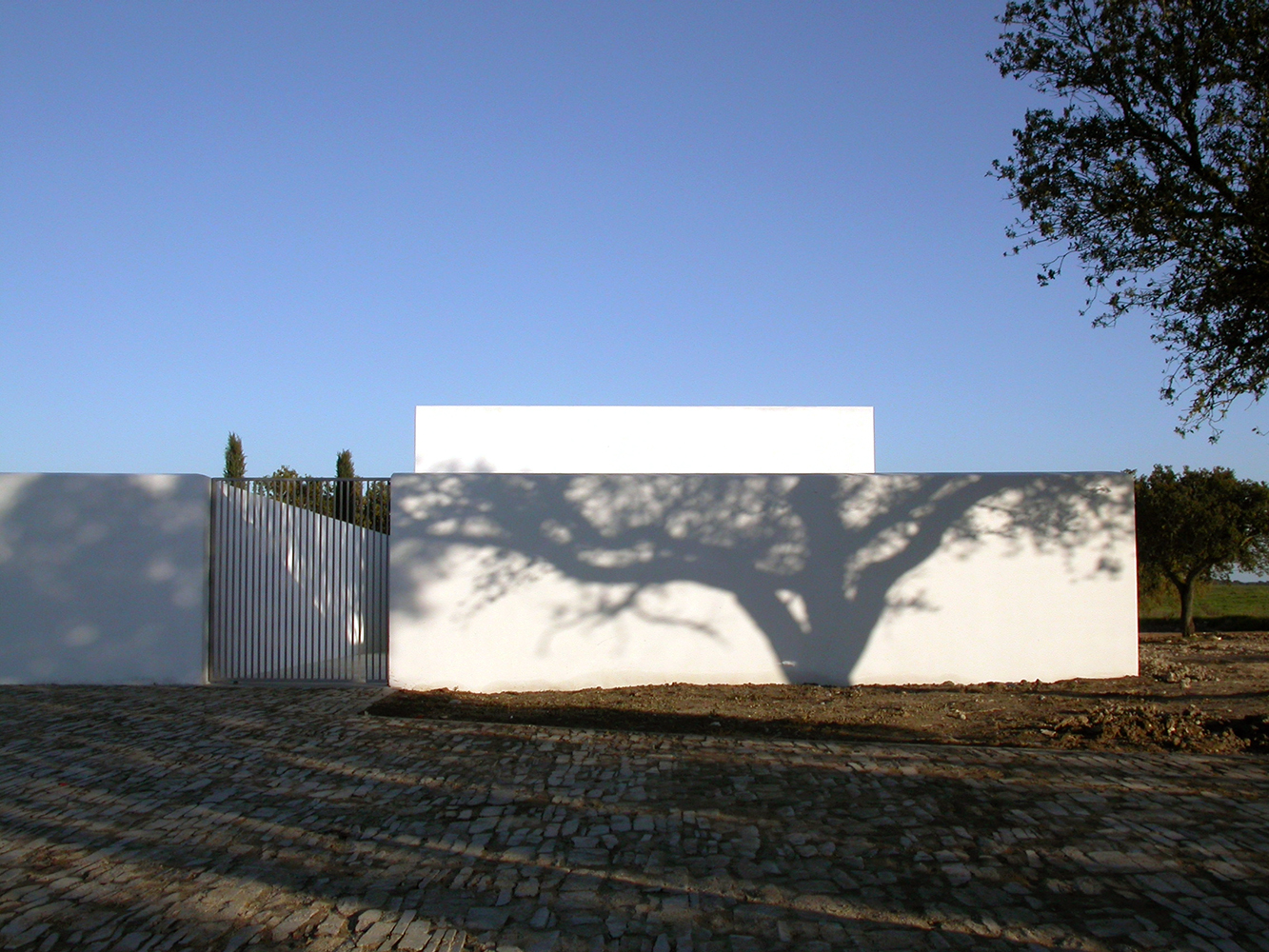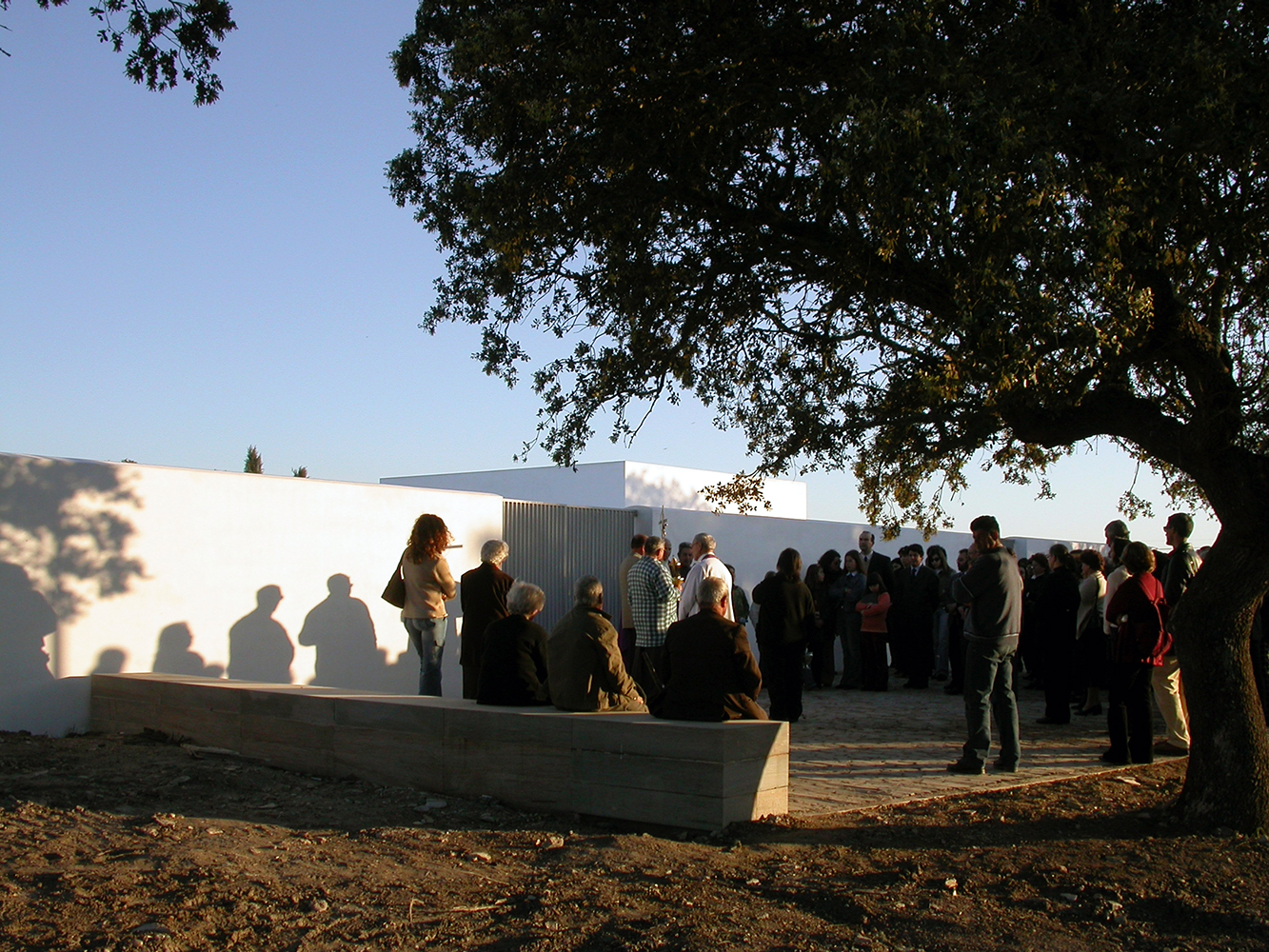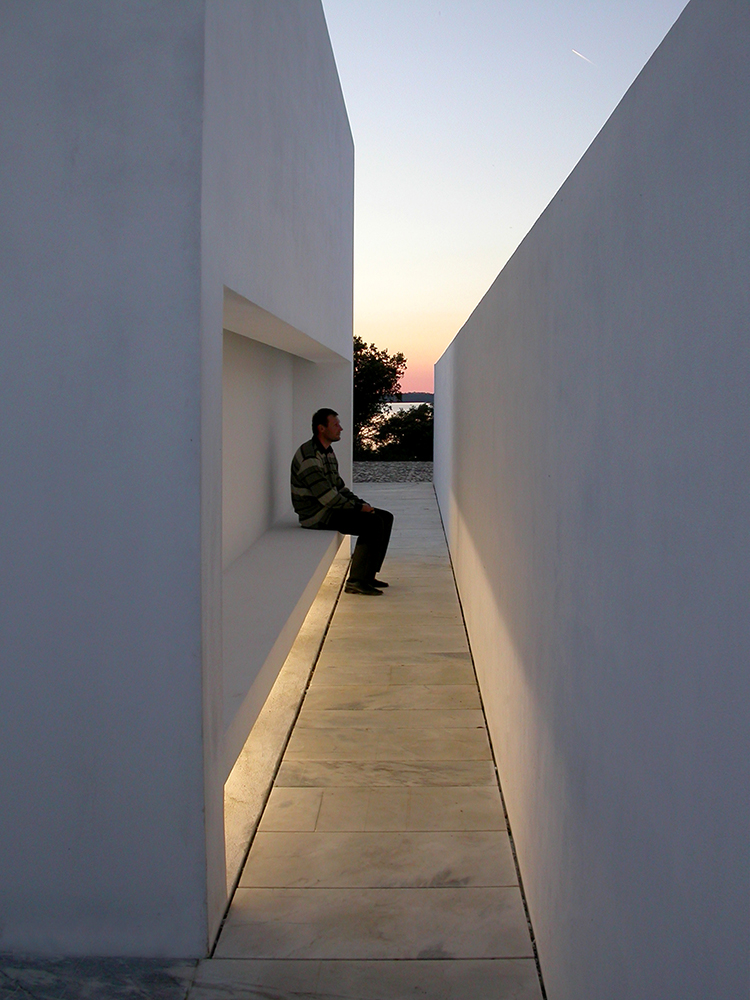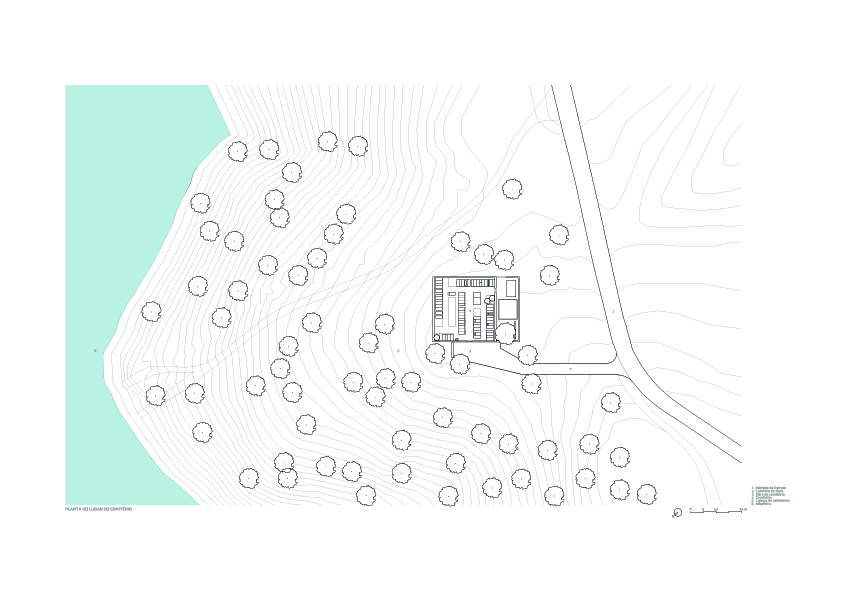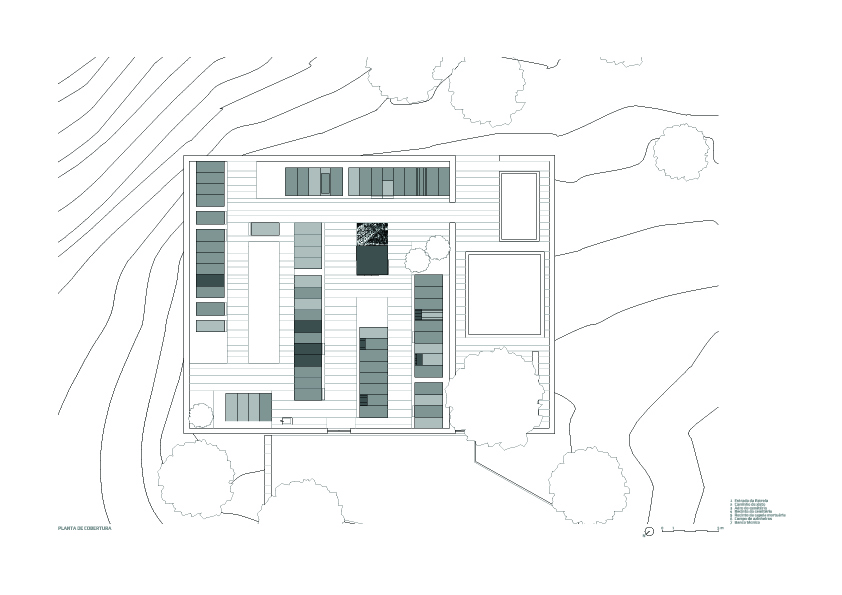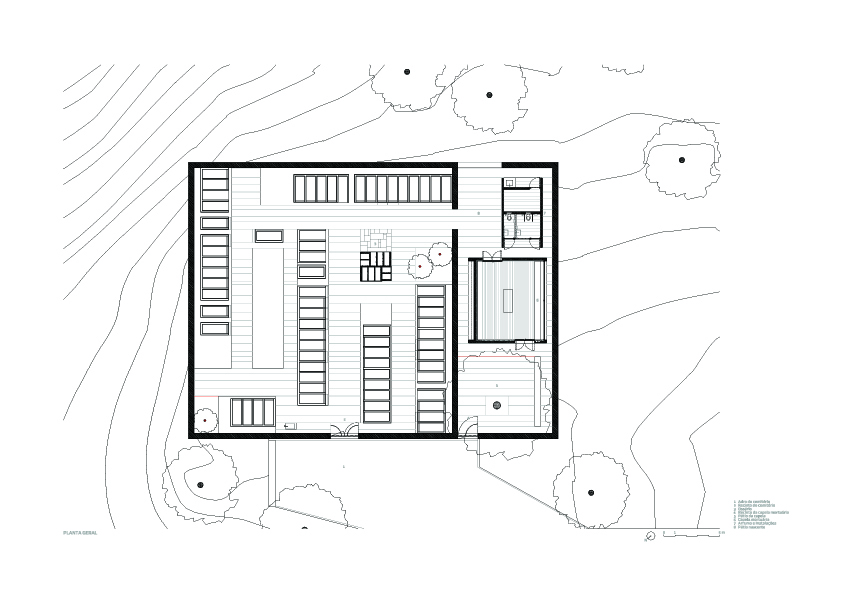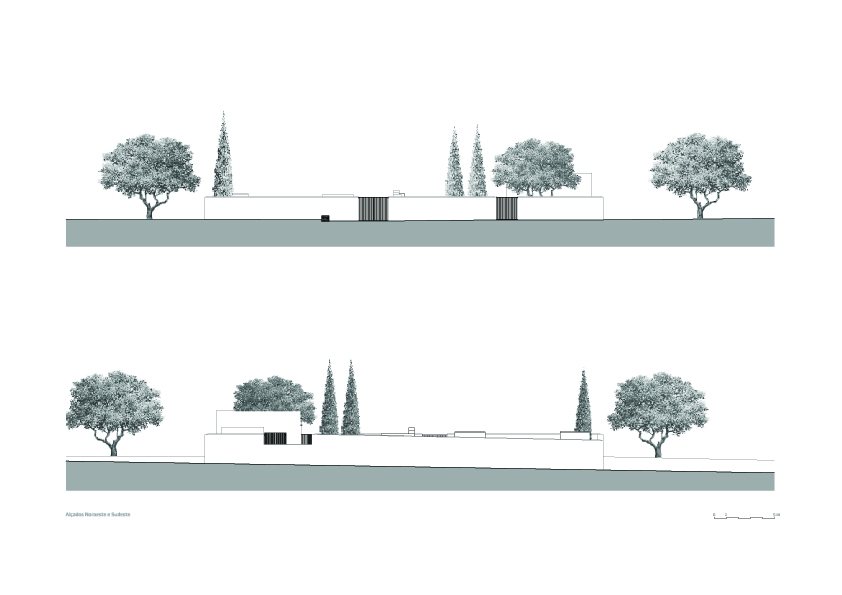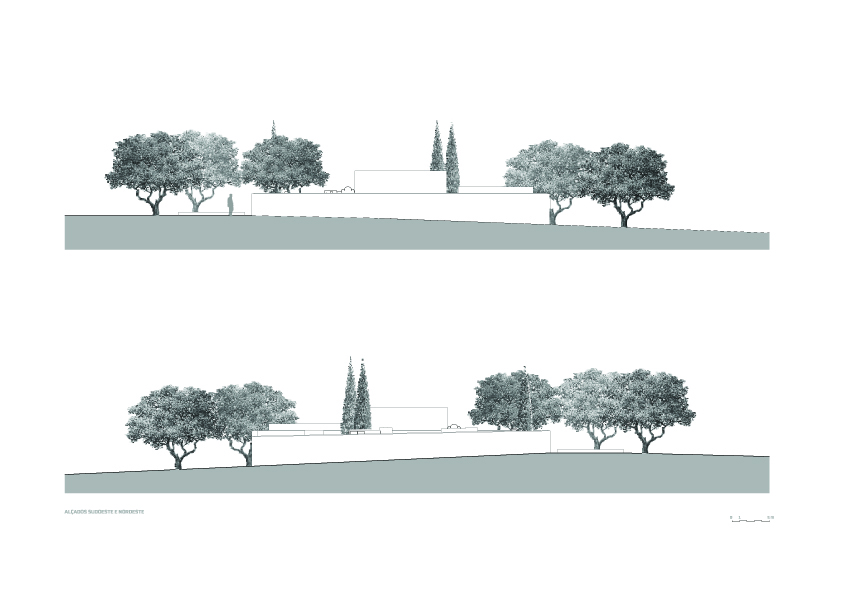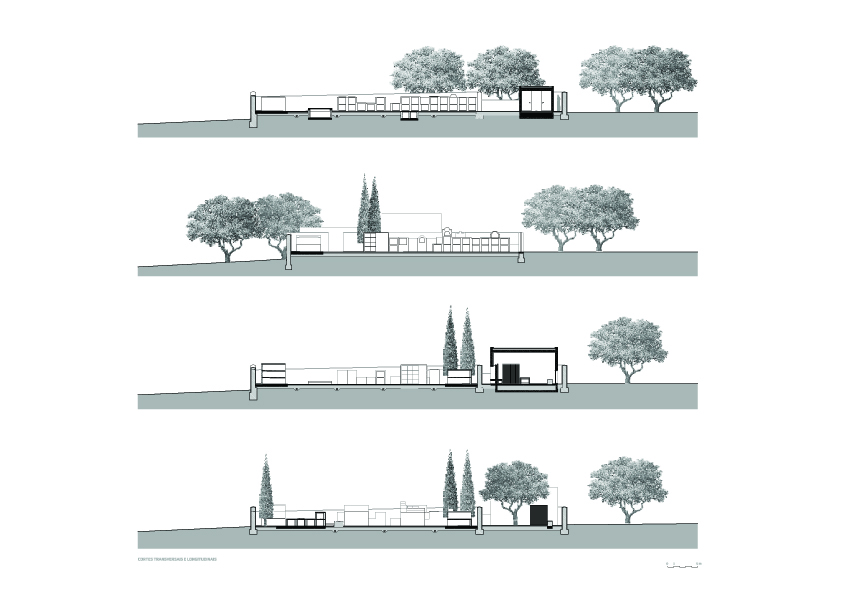03-05,
South
Estrela Cemetery and Mortuary Chapel
Due to the construction of Barragem do Alqueva (Alqueva Dam) in the South of Portugal, a crucial project in the future development of Alentejo Region, aldeia da Estrela (Estrela village) became surrounded by water. Its inhabitants had to be readapted to this new lake condition. In this landscape transformation process, the old cemetery was the only place to be submersed. For this reason a new cemetery had to be conceived and located near the entrance of Estrela village.
The cemetery and mortuary chapel constitute an ensemble of two enclosed spaces, built in a holm-oak field. One of the holm-oaks becomes part of the enclosure, as an element of the cemetery anchorage, transforming the chapel patio into an important shadow space. This gesture acquires a structural significance, either in the dialogue between built and landscape, or in the character of the chapel interior space, built with holm-oak wood, recycled from the fell of trees in the new lagoon river-side.
Like the cemetery of Luz, the elements dislocated from the old cemetery, witch characterize the cemetery typology, are interpreted in the design of the new dislocated cemetery. The spatial intensity held in the shadow spaces between walls, patios and white surfaces, densify the sense of this place, like silence intervals.
[In March 12, 2004, just before the opening celebration, the Chapel patio holm-oak was cuted down by the will of the inhabitants of Estrela village.]
The cemetery and mortuary chapel constitute an ensemble of two enclosed spaces, built in a holm-oak field. One of the holm-oaks becomes part of the enclosure, as an element of the cemetery anchorage, transforming the chapel patio into an important shadow space. This gesture acquires a structural significance, either in the dialogue between built and landscape, or in the character of the chapel interior space, built with holm-oak wood, recycled from the fell of trees in the new lagoon river-side.
Like the cemetery of Luz, the elements dislocated from the old cemetery, witch characterize the cemetery typology, are interpreted in the design of the new dislocated cemetery. The spatial intensity held in the shadow spaces between walls, patios and white surfaces, densify the sense of this place, like silence intervals.
[In March 12, 2004, just before the opening celebration, the Chapel patio holm-oak was cuted down by the will of the inhabitants of Estrela village.]
